In this article, we will discuss an interesting red cabbage pH paper investigatory project.
How to Make Red Cabbage pH Paper
pH is one of the most fundamental science concepts or, more specifically, the chemistry that we learn as kids.
But often, the concept of acidity and basicity and pH papers may not be the most straightforward phenomenon to visualize.
So, if you want to make this concept easier and more enjoyable for your little ones, then this experiment may help.
This red cabbage pH paper project is safe, non-toxic, and easy to make. The best part is that you can easily find most of the ingredients and appliances required to perform the activity.
Red Cabbage pH Paper Chemistry Project: The Complete Procedure
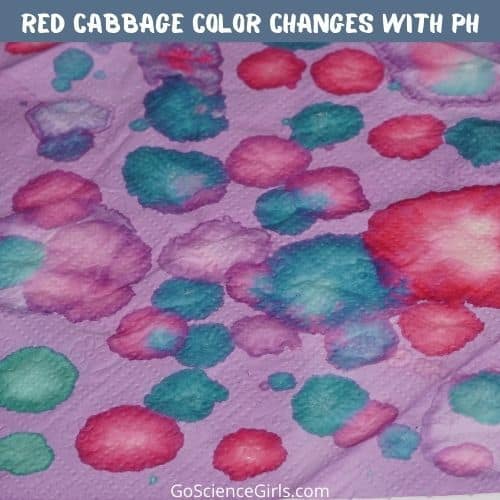
Components and appliances required
● Red Cabbage.
● Coffee filter or filter paper.
● Microwave (optional).
● Dropper (optional).
● Blender (optional).
*Product Links are affiliate links – Your support is highly appreciated
The Procedure
Follow the below steps to make red cabbage pH indicators at home:
● It would be best to blend your red cabbage leaves using a blender. You have to chop the cabbage into thin slices to fit in the blender. If you don’t have a blender, you can finely chop your cabbage using a knife or vegetable grater. You need to add only as much water as is required into the blender as you want your juice to be as concentrated as possible.
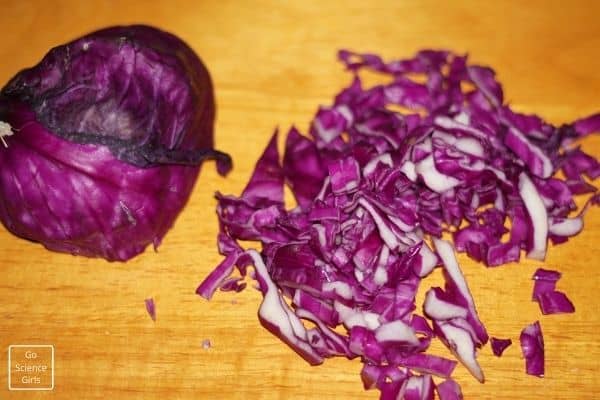
● The next step is to microwave the blended cabbage until they reach a boiling point. Or you can also soak your cabbage leaves in boiling water to achieve the same results. The cabbage must be allowed to cool.
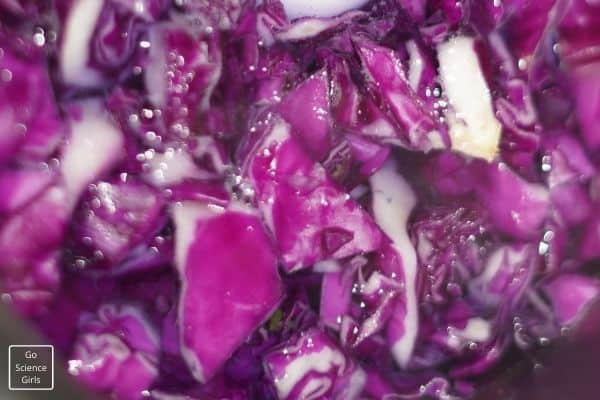
● Using filter paper or a coffee filter, you need to filter the deeply colored liquid from the cabbage blend.
● Now take a coffee filter or filter paper to soak it in the red cabbage juice and allow it to dry for a considerable amount of time.
● To test out the legitimacy of your homemade pH paper, you can put a few drops of a solution on the pH paper. If it changes color, you know that your pH paper is ready. Use your pH paper however you want.
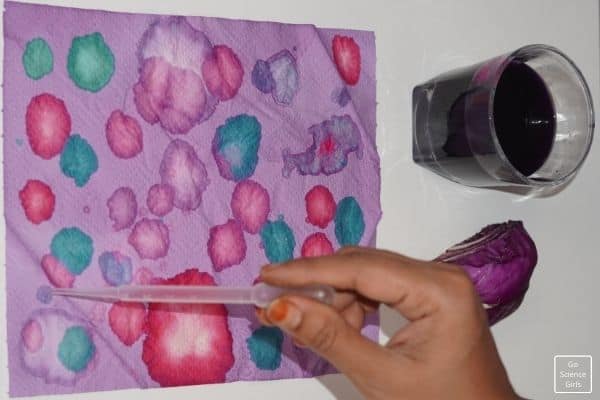
Science Behind Red Cabbage pH Indicator
pH is the measure of acidity or authenticity of a liquid solution; it can also be defined as the measure of acidity or alkalinity of a solution.
This pH value of a solution is measured using a scale that ranges from 0 to 14. Where Acid solutions have a pH less than 7, neutral solutions have a pH of 7, and alkaline solutions have a pH greater than 7.

pH is a medium for determining the acidity and basicity of a solution. When a part of a pH paper is dipped in the solution, it changes color according to its pH value.
If the color changes to blue, the solution is alkaline; if it changes to light green, it’s neutral, and if the solution is acidic, its color changes to red. You can see these color changes in the above picture as we tested the cabbage juice dipped paper with Baking Soda+Water, Vinegar and Lemon Juice.
This pH indicator, like any other indicator, is red for a PH less than 7 and blue for pH 7 and above.
What makes red cabbage a good ph indicator?
Red cabbage contains anthocyanins, which are red pigments that give it its color. When placed in an acidic environment, red cabbage will turn purple-ish. This process is known as pH shift because the pH of the solution changes from 7 to less than 7 (more acidic).
The color change depends on the concentration of hydrogen ions in the solution and on the amount of anthocyanin present in the sample.
The more hydrogen ions there are in a solution and the more anthocyanin, the more purple your sample will be. If there are not enough hydrogen ions or not enough anthocyanin, then you won’t see any color change at all.
What is the ph of red cabbage juice?
The ph of red cabbage juice is about 5.2, which means it is slightly acidic.
Things to remember
1. The red cabbage leaves are chopped to help release the anthocyanin pigment present in the leaves, which acts as the pH indicator.
2. The heat applied through the boiling paper also helps release the anthocyanin pigment.
3. The best kind of paper that can be used for the experiment is coffee filter paper because it is more porous as compared to filter paper
4. To not stain your hands while dying the paper, you can stain only half of the filter paper and keep the other part blank; this makes your job of handling the pH paper a lot easier.
5. You can repeat this experiment at your home using any other purple or red-colored flowers and vegetables as they all have these natural pH indicating pigments.
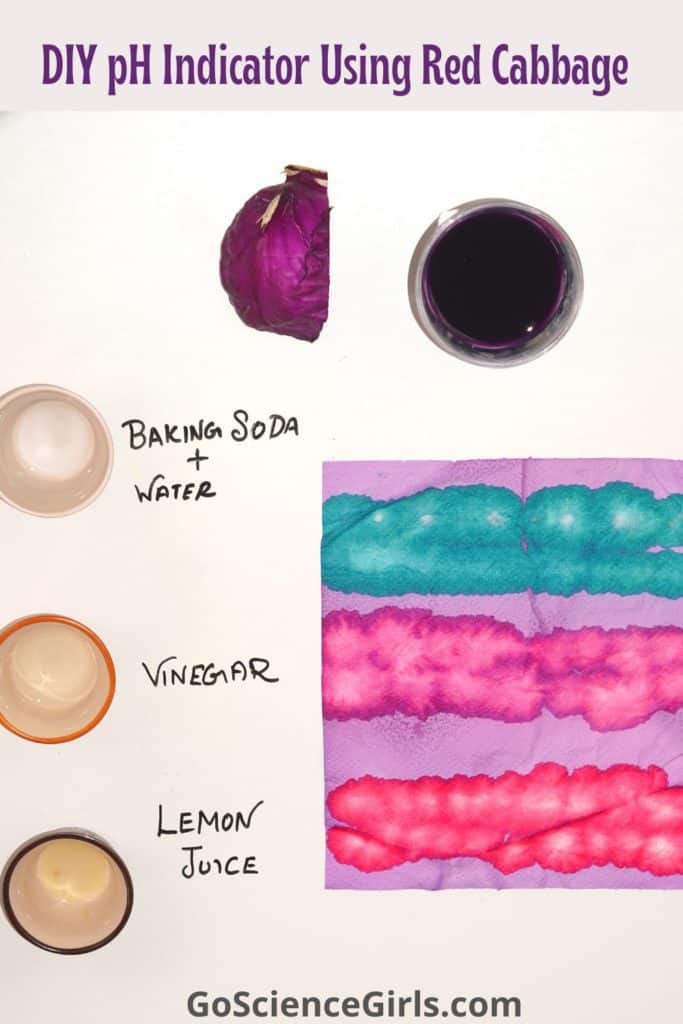
Conclusion
So now that you know a little more about pH and the many ways you can use red cabbage to test it, go ahead and give this technique a try.
The red cabbage pH indicator is used to determine whether something is above or below the neutral point of 7.0 (pure water has a pH of 7.0).
Whilst it is most popular with science laboratories, you can use this trick yourself at home to make your own red cabbage pH paper.
I hope this article was helpful. Please leave any questions in the comments section below and I will try to get back to you as soon as I can.
